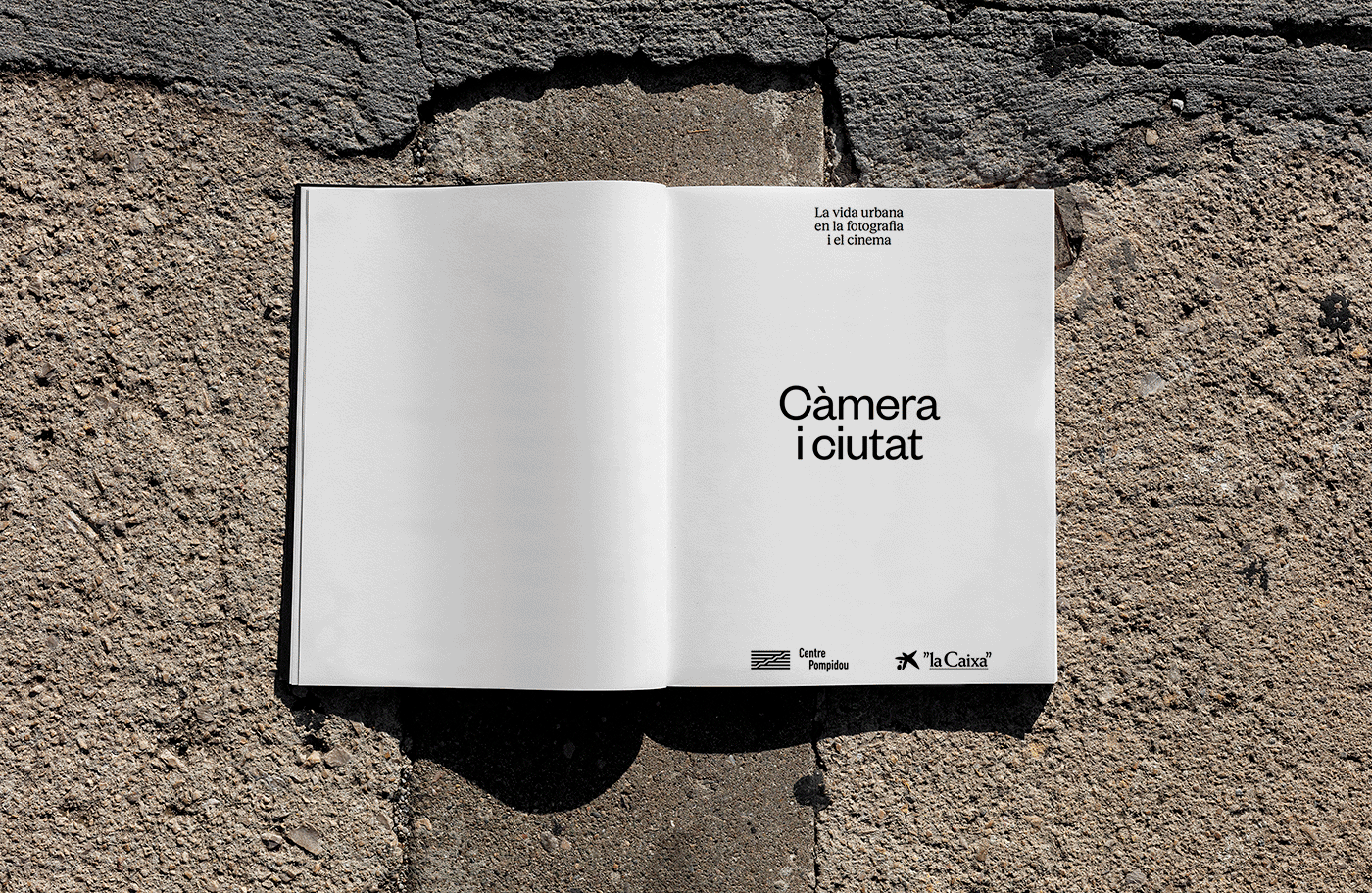
Càmera i ciutat (Studio Gris. Griselda Martí, Miguel Puerto, Gisela Chueca, Helena Esteban, Barcelona: CaixaForum 2019) With Elena Siemen’s Street Theatre in Passing (see earlier post, below) still on my mind and on the basis of the layout images on Behance.net, I ordered the the catalogue for this synoptic exposition at Barcelona’s ‘la Caixa’ CaixaForum and the Pompidou Centre in Paris surveys the co-evolving relationship between photography and cinema, on one hand, and the notion of the city and urban life on the other. It maps out the creation of a modern and thus now globalized ‘image of the city’ that is visualized on film. Liek the title of one introductory essay by Florian Ebner, ‘Hold Still/Keep Going’, this relationship is one of counterpoints and correspondences. However, the survey of some of the most recognizable Twentieth Century images demonstrates the entanglement of the photographic and cinematic gaze with our vision and understanding of the modern city.
Ten sections span from the 20s to the end of the century. The Vertical City, heralded in Sheele and Strands’ 1920s film Manahattan fuses the urban verticality and technological sublime. We Actors of the City turns the gaze to the street level photography of Moloy -Nagy and others of the diversity of the street, including its marginalized members. Militant City displays the convulsed and bombed cities of Spain of the 30s. Humanistic and Existential City examines the rebuilding and trauma of the post-World War war years. The Critical City investigates the social tensions and inequalities that are visibly evident in urban life. Rebel City documents impatient breaks with the normative modernity of established elites. The City as Scene captures instances of the spontaneity and the emergence of urban advertising images as a parallel image system that is like a magic mirror to urban life. Horizontal City reaches out to suburban mobilities and the reconstruction of urban peripheries into edge cities. The Reflexive City presents the negotiation of public life and public space in moments of encounter, confrontation and navigation of crowded spaces. The Global and Virtual City presents the scopic regimes that now surveil the urban and form a new infrastructure of urbanity that is as much mobile materials and communication as it is fixed buildings, envisioned not just as skyline but from the sky itself.
This exhibition is both a overview of ways of looking that are part of a form of interaction that is uniquely urban and uniquely modern. It is a summative document and an aesthetic achievement. It shows us the urban, not as just people, nor just architecture but rather than social space and movement we grasp as the city in itself. This less a concrete materiality than a tidal, distributed flow or flood of energies and bodies.
However, it also seems like a farewell moment. A letting-go of the modernist expansion of the city as a place that continually produced dreams of a future, of success, of cultural ascent. The closing chapters show a more sterile, concrete city managed from above and no longer so emergent from the bustle and renao of the busy street or public square.
-Rob Shields (University of Alberta)